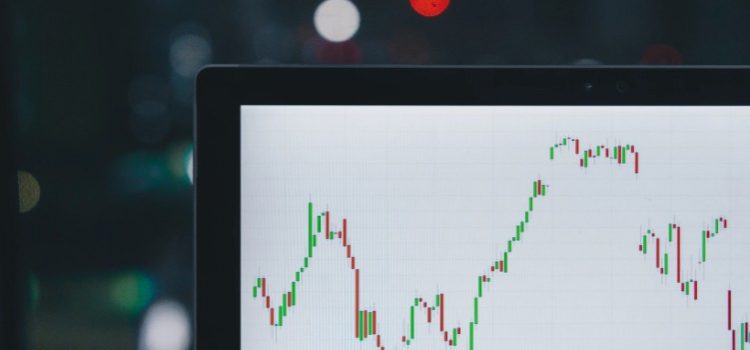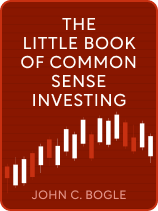

This article is an excerpt from the Shortform book guide to "The Little Book of Common Sense Investing" by John C. Bogle. Shortform has the world's best summaries and analyses of books you should be reading.
Like this article? Sign up for a free trial here.
Are index funds better than mutual funds? Can actively managed mutual funds outperform index funds in the long run?
Some argue that, despite their higher costs, mutual funds could nonetheless be superior to index funds if they generated proportionately higher returns. In The Little Book of Common Sense Investing, Jack Bogle turns to historical data and statistical models to disprove this misconception.
Here’s why mutual funds generate significantly lower returns for investors than index funds.
Jack Bogle: Why Mutual Funds Generate Lower Returns
Are index funds better than mutual funds? First, Bogle examines historical data to see whether mutual funds have outperformed index funds in the past. In this regard, the data are clear: Low-cost index funds have consistently outperformed the vast majority of mutual funds since 1970.
(Shortform note: Although advocates of actively managed funds grant that index funds have outperformed most mutual funds, some argue that doesn’t mean index funds are always a better option. In particular, they claim these historical data only show index funds are better than the average mutual fund. Consequently, these advocates recommend finding mutual funds with gifted managers who are able to outperform the market over the long term.)
To show as much, Bogle turns to the records of the 355 mutual funds that existed between 1970 and 2016. Of these 355 funds, 281 of them—about 80%—are no longer in business. Because you can’t invest for the long term in funds that don’t exist for the long term, Bogle concludes that low-cost index funds—which don’t go out of business—have been superior to these 281 funds.
Of the 74 remaining funds, Bogle notes that 29 of them significantly underperformed relative to the market, with returns that were more than 1% below the S&P 500’s returns. Moreover, 35 of those funds essentially matched the market average, with returns that were within 1% of the S&P 500 in either direction.
Consequently, Bogle concludes that only 10 of the original 355 funds in 1970 outperformed the S&P 500 by over 1%. In other words, only 3% of the mutual funds that existed since 1970 delivered clearly above-market returns.
(Shortform note: Since The Little Book of Common Sense Investing’s publication in 2017, the historical trend of mutual funds underperforming has continued. Indeed, a 2022 study from the S&P Dow Jones Indices found that no actively managed funds consistently beat the market from 2017 to 2022.)
The TIF, conversely, delivered returns that were only 0.1% below the market average—a result of its substantially lower operating costs. So, the TIF delivered returns equal to or greater than 97% of mutual funds since 1970. Rather than searching for the few high-performing mutual funds, Bogle concludes that investing in index funds is the superior strategy.
(Shortform note: Although the proportion of passive assets like the TIF consistently grows larger in the US, actively managed funds still constituted 57% of investment companies’ total assets in 2021—despite their markedly lower performance. To explain this phenomenon, researchers have argued that actively managed funds outperform passively managed funds in down markets. Because investors are most concerned with their assets in down markets, they suggest this could explain why a large proportion of individuals continue to invest in active funds.)
Compound Interest
Moreover, Bogle notes that these small differences in returns between mutual funds and index funds yield outsized long-term results because interest compounds over time—in other words, it grows exponentially instead of linearly.
To see the effects of compound interest, imagine two funds: a mutual fund that earns 8% annually, and an index fund that earns 9% annually. If you initially invested $100,000 in each fund, they would deliver the following returns over time:
- After one year, the mutual fund would return $108,000, while the index fund would return $109,000.
- After 10 years, the mutual fund would return $216,000, while the index fund would return $237,000.
- After 50 years, the mutual fund would return about $4.7 million, while the index fund would return over $7.4 million
So, while a 1% difference would only cost you $1,000 after the first year, it would cost you over $2.7 million after fifty years!
Monte Carlo Simulation
Beyond historical data, Bogle also uses a Monte Carlo simulation—a statistical model predicting how likely different outcomes are—to determine the likelihood that actively managed mutual funds will outperform TIFs in the long term. Mirroring the historical data, this simulation predicts that only 2% of mutual funds will outperform index funds over a 50-year period.
Bogle’s Monte Carlo simulation relies on two key assumptions: First, mutual funds are volatile, meaning their performance relative to the market varies yearly; and second, mutual fund management will cost about 2% annually, while index fund management will cost 0.25%. Because TIFs actually cost about 0.1% annually, while mutual fund costs can run north of 2%, Bogle observes that this simulation gives mutual funds the benefit of the doubt.
Given these assumptions, the simulation predicts that after one year, 29% of actively managed mutual funds would beat index funds. However, after five years, only 15% of mutual funds would beat index funds, and after 50 years, only 2% of mutual funds would outperform index funds.
Reversion to the Mean
According to Bogle, fewer mutual funds outperform index funds over time because of reversion to the mean—the statistical tendency for assets to converge to the average price over time. Because of reversion to the mean, mutual funds that initially outperform index funds are likely to see returns drop below index funds’ returns in the long run.
For example, imagine that you flip a coin five times and it lands on heads four times—80% of the time. While this result is unsurprising in the short term, if you kept flipping the coin—say, 100 times—you’d expect the frequency to level out to about 50%.
Similarly, while a sizable percentage of mutual funds can beat index funds in the short term, few mutual funds can sustain this performance for the long term. Just like you shouldn’t expect a coin to keep landing on heads 80% of the time, the Monte Carlo simulation shows that you shouldn’t expect mutual funds to keep outperforming index funds in the long run.
Future Projections
Beyond the Monte Carlo simulation, Bogle also makes specific projections about the future prospects of mutual funds versus index funds, from 2017-2027. Due to lower dividends, lower rate of gross domestic product (GDP) growth, and lower speculative returns in the current market conditions, he predicts the gap between index fund returns and mutual fund returns will increase in the future, with index funds increasingly outperforming mutual funds.
To make his predictions, Bogle analyzes the three factors that contribute to stock prices: dividends, earnings growth, and speculative returns. First, Bogle notes that in 2017, the average dividend yield—the ratio of a company’s dividends per share compared to its share price—was lower than the historical average. Indeed, the dividend yield in 2017 was 2%, far below the historical average of 4.4%. Consequently, if you owned stock in a company at $100 per share, you could expect $2 in annual dividends per share.
Second, Bogle notes that earnings growth is correlated strongly with GDP—the total value of goods and services in a given society. And although the US’s GDP has historically increased about 6% annually, projections suggest it will increase at a slower rate of 4 to 5% annually from 2017-2027. To be cautious, Bogle assumes earnings growth will increase about 4% annually.
Finally, Bogle agrees with Wall Street projections that P/Es—price-to-earnings ratios indicating how much investors would pay per dollar of earnings growth, which are the best proxy for speculative returns—will decrease from 23.7 in 2017 to about 20 in 2027. This decrease, he asserts, would lead to a 2% drop in speculative returns.
Considering these factors, Bogle predicts that the average market return will be about 4% in 2017 through 2027: 2% from dividends, 4% from earnings growth, and -2% from lower speculative returns. This falls well short of the market’s average return of 9.5% since 1900.
However, this 4% market return ignores two costs: inflation, and the costs of investing in mutual funds versus index funds. Inflation, Bogle assumes, will continue to rise about 2% annually, meaning the 4% market return will amount to 2% in real value. Additionally, Bogle assumes that actively managed mutual funds will cost 1.5% annually, while low-cost index funds cost about 0.1% annually.
Consequently, we can actually expect mutual funds to return about 0.5% annually, and low-cost index funds to return about 1.9% annually. To recap:
Average market return: 4% → Adjusted for inflation: 2%
Mutual fund: (2% market return) – (1.5% annual costs) = 0.5% annual return
Index fund: (2% market return) – (0.1% annual costs) = 1.9% annual return
In other words, index funds will yield nearly four times greater annual returns than mutual funds from 2017 to 2027.

———End of Preview———
Like what you just read? Read the rest of the world's best book summary and analysis of John C. Bogle's "The Little Book of Common Sense Investing" at Shortform.
Here's what you'll find in our full The Little Book of Common Sense Investing summary:
- A simple winning strategy for novice investors
- Why index funds are superior to mutual funds
- Why bonds belong in your investment portfolio






